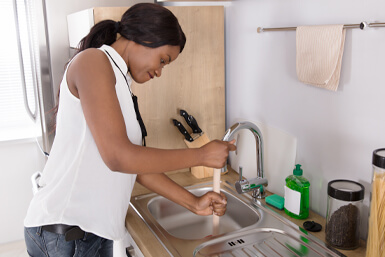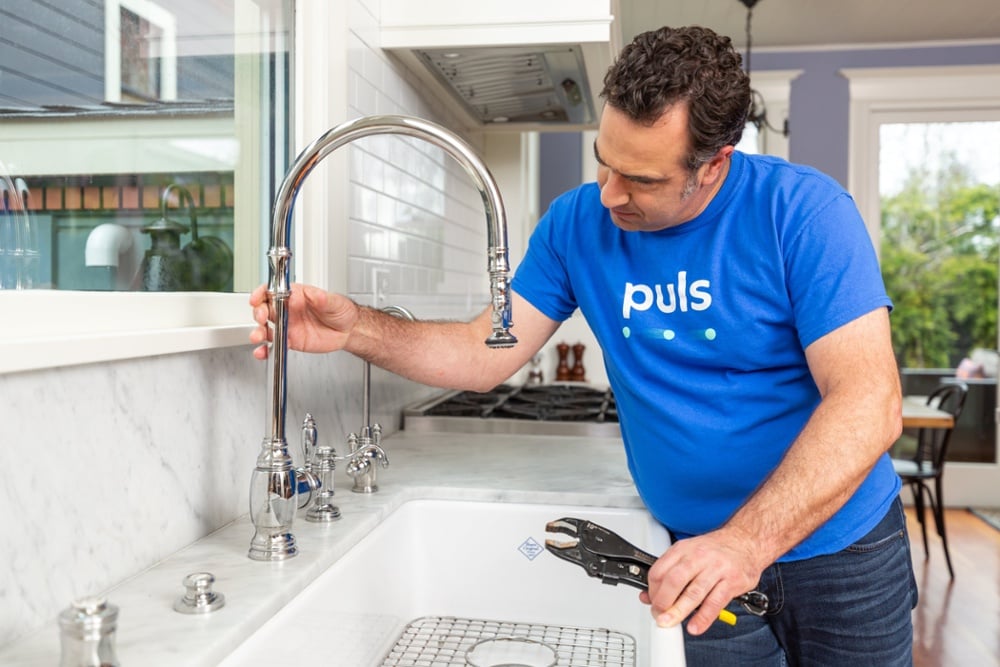Mystery-Solving Puzzling Plumbing Noises in Your Home
Mystery-Solving Puzzling Plumbing Noises in Your Home
Blog Article
Were you looking for know-how concerning How To Fix Noisy Pipes?

To detect noisy plumbing, it is very important to identify very first whether the undesirable sounds occur on the system's inlet side-in other words, when water is turned on-or on the drainpipe side. Sounds on the inlet side have actually varied causes: excessive water stress, worn valve and also tap components, incorrectly attached pumps or various other appliances, improperly placed pipe fasteners, and plumbing runs including a lot of tight bends or various other limitations. Noises on the drainpipe side typically come from poor area or, similar to some inlet side noise, a format having tight bends.
Hissing
Hissing sound that happens when a faucet is opened a little normally signals too much water pressure. Consult your neighborhood public utility if you suspect this issue; it will have the ability to inform you the water pressure in your area as well as can set up a pressurereducing shutoff on the incoming water system pipeline if needed.
Thudding
Thudding noise, usually accompanied by shuddering pipes, when a tap or device valve is turned off is a condition called water hammer. The noise as well as resonance are caused by the reverberating wave of stress in the water, which instantly has no location to go. Often opening up a shutoff that discharges water quickly into a section of piping consisting of a constraint, arm joint, or tee installation can generate the very same condition.
Water hammer can usually be treated by setting up installations called air chambers or shock absorbers in the plumbing to which the problem valves or faucets are linked. These tools permit the shock wave created by the halted flow of water to dissipate in the air they consist of, which (unlike water) is compressible.
Older plumbing systems might have brief upright areas of capped pipeline behind wall surfaces on tap competes the exact same objective; these can at some point loaded with water, reducing or destroying their effectiveness. The treatment is to drain pipes the water system totally by shutting off the primary water shutoff as well as opening all taps. After that open the main supply shutoff as well as close the taps one by one, beginning with the faucet nearest the valve and also finishing with the one farthest away.
Babbling or Shrieking
Intense chattering or screeching that happens when a valve or tap is activated, which generally vanishes when the installation is opened totally, signals loosened or faulty internal parts. The service is to change the shutoff or faucet with a new one.
Pumps as well as home appliances such as washing devices and dishwashing machines can transfer electric motor sound to pipes if they are improperly connected. Connect such items to plumbing with plastic or rubber hoses-never inflexible pipe-to isolate them.
Various Other Inlet Side Noises
Creaking, squealing, damaging, snapping, and also tapping typically are brought on by the expansion or tightening of pipes, normally copper ones supplying hot water. The audios take place as the pipelines slide versus loose bolts or strike nearby home framework. You can usually pinpoint the place of the trouble if the pipelines are subjected; simply follow the sound when the pipelines are making noise. Probably you will certainly uncover a loosened pipeline hanger or an area where pipelines exist so near floor joists or other mounting items that they clatter against them. Affixing foam pipeline insulation around the pipelines at the point of get in touch with should fix the problem. Make certain straps and also wall mounts are secure as well as offer adequate support. Where feasible, pipe bolts should be affixed to large structural aspects such as structure walls instead of to framing; doing so minimizes the transmission of vibrations from plumbing to surfaces that can magnify and transfer them. If affixing bolts to framework is unavoidable, wrap pipes with insulation or various other resistant material where they contact fasteners, as well as sandwich completions of new fasteners between rubber washing machines when mounting them.
Fixing plumbing runs that deal with flow-restricting limited or countless bends is a last resort that needs to be undertaken just after speaking with a knowledgeable plumbing contractor. Regrettably, this situation is relatively usual in older homes that may not have actually been constructed with indoor plumbing or that have actually seen numerous remodels, specifically by novices.
Drainpipe Noise
On the drain side of plumbing, the principal objectives are to get rid of surfaces that can be struck by dropping or hurrying water and also to insulate pipelines to consist of inevitable noises.
In new building and construction, bath tubs, shower stalls, toilets, and also wallmounted sinks as well as basins ought to be set on or versus durable underlayments to reduce the transmission of audio with them. Water-saving commodes and faucets are less loud than conventional models; install them rather than older kinds even if codes in your location still allow making use of older fixtures.
Drainpipes that do not run up and down to the basement or that branch into horizontal pipe runs supported at flooring joists or various other framing existing specifically bothersome noise troubles. Such pipes are huge enough to radiate considerable vibration; they additionally lug substantial quantities of water, that makes the circumstance even worse. In brand-new building, define cast-iron soil pipes (the large pipes that drain pipes commodes) if you can afford them. Their massiveness consists of a lot of the sound made by water travelling through them. Also, prevent directing drainpipes in walls shown bed rooms and rooms where people gather. Wall surfaces containing drains need to be soundproofed as was defined previously, utilizing double panels of sound-insulating fiber board and also wallboard. Pipelines themselves can be wrapped with unique fiberglass insulation made for the objective; such pipes have an impervious plastic skin (in some cases having lead). Results are not constantly adequate.
WHY IS MY PLUMBING MAKING SO MUCH NOISE?
This noise indeed sounds like someone is banging a hammer against your pipes! It happens when a faucet is opened, allowed to run for a bit, then quickly shut — causing the rushing water to slam against the shut-off valve.
To remedy this, you’ll need to check and refill your air chamber. Air chambers are filled with — you guessed it — air and help absorb the shock of moving water (that comes to a sudden stop). Over time, these chambers can fill with water, making them less effective.
You’ll want to turn off your home’s water supply, then open ALL faucets (from the bathroom sink to outdoor hose bib) to drain your pipes. Then, turn the water back on and hopefully the noise stops! If you’re still hearing the sound, give us a call to examine further.
Whistles
Whistling sounds can be frustrating, as sometimes the source isn’t easily identified. However, if you can pinpoint which faucet or valve that may be the cause, you’ll likely encounter a worn gasket or washer — an easy fix if you replace the worn parts!Whistling sounds from elsewhere can mean a number of things — from high water pressure to mineral deposits. Your best plan of attack here is to give our plumbing experts a call. We’ll be able to determine where the noise is coming from and what the cause may be, then recommend an effective fix!
Cracks or Ticks
Cracking or ticking typically comes from hot water going through cold, copper pipes. This causes the copper to expand resulting in a cracking or ticking sound. Once the pipes stop expanding, the noise should stop as well.
Pro tip: you may want to lower the temperature of your water heater to see if that helps lessen the sound, or wrapping the pipe in insulation can also help muffle the noise.
Bangs
Bangs typically come from water pressure that’s too high. To test for high water pressure, get a pressure gauge and attach it to your faucet. Water pressure should be no higher than 80 psi (pounds per square inch) and also no lower than 40 psi. If you find a number greater than 80 psi, then you’ve found your problem!
Next step is to give us a call in order to install a pressure regulator. Trust us, you don’t want to wait to resolve this issue. Not only is the sound annoying, but high water pressure can be destructive to your home — including damaging certain appliances, like your washer and dishwasher.
Dripping
You might be accustom to the slow quiet drip your kitchen faucet makes. You might have even tuned out your bathroom sink dripping and drabbing all day long — but it’s time to find its cause.
A slow drip could signify a variety of easy to fix issues, such as a worn out O ring, or loose part. And by ignoring the drip, you could be wasting up to 2,000 gallons of water a year! So start conserving water — get it looked at ASAP.
https://www.pwessig.com/blog/2018/december/why-is-my-plumbing-making-so-much-noise-/

I recently found that review about Why is My Home Making Strange Plumbing Noises when perusing the search engines. I beg you take the opportunity to share this page if you appreciated it. I enjoy reading our article about Why Your Water Pipes Are Noisy and How To Shut Them Up.
Ready to assist. Report this page